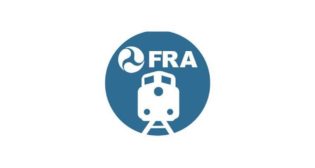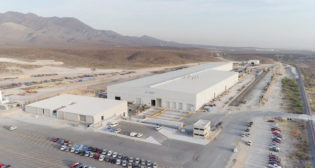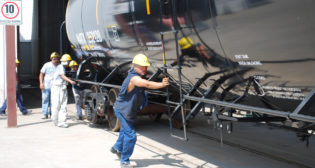
Stronger wheel steels
Written by AdministratorHigh performance wheels can offer improved safety and an extended life cycle. Wheelset removals are the largest freight car maintenance expense item in North America, accounting for half of all car maintenance dollars. Wheel tread damage is the single largest cause of wheelset removals, and wheel wear is another major factor limiting wheelset life.
Manufacturers around the world have produced high performance wheel steels that have the potential to improve wheel life through changes in microstructure, and alloy elements, improved microcleanliness, increased hardness, and increased yield strength.
Eight types of high performance wheels currently are undergoing testing to quantify the benefits compared to the AAR Class C wheels currently used in North American freight service. This work is part of the AAR’s Strategic Research Initiatives (SRI) program to prevent wheel failures. Griffin, Lucchini, OneSteel, Standard Steel, Sumitomo, and Valdunes each donated high performance wheels for this project. OneSteel is participating with two steel formulations. TTCI has also developed a high performance wheel known as the SRI wheel.
Much of the tread damage responsible for wheelset removals is attributed to shelling, the common term for large voids in the running surface of a wheel. Many cycles (wheel revolutions) under high stress conditions create surface cracks in the wheel tread through rolling contact fatigue. As the cracks propagate and grow, they can connect and dislodge a patch of wheel tread, leaving a void. The heat generated from brake applications can accelerate fatigue degradation through a process known as thermal mechanical shelling.
According to shakedown theory, materials with higher yield strength have more resistance to rolling contact fatigue damage. Tensile tests were performed at four temperatures between 70 degrees F and 1,000 degrees F on samples harvested from the high performance wheels. These tests showed that all of the high performance wheel steels exhibited a substantial drop in yield strength at elevated temperatures, as expected. Wheel type 6 showed a 40% to 90% improvement in yield strength compared to AAR Class C over the temperature range tested. Wheel type 5 and the SRI wheel showed a 30% to 60% advantage compared to AAR Class C. The other high performance wheel steels included in the test have yield strength properties similar to those of AAR Class C wheel steel. The excellent yield strength properties of wheel type 6 are attributable to its bainitic microstructure. All of the other high performance wheels (and AAR Class C wheels) have a pearlitic microstructure.
The high performance wheels are also being tested at the Facility for Accelerated Service Testing (FAST) and under a Union Pacific unit coal train. No safety concerns have been found with any, and no condemnable defects have been found after approximately 40,000 service miles in each test.
Nearly all of the wheels in service at FAST have developed rolling contact fatigue cracks and some wheels are developing small shells. The operation at FAST exposes the wheels to harsh conditions through the use of loaded cars (286,000 and 315,000 pounds gross rail load) 100% of the time and through frequent curve negotiation (70% of the track loop is curved). The type 6 bainitic wheels in service at FAST are showing a substantially higher wear rate compared to the other high performance wheels and AAR Class C wheels. It should be noted that the train is only braked a few times every night when it operates around the 2.7-mile High Tonnage Loop at FAST.
TTCI personnel conducted visual inspections of most wheels in the revenue service test after approximately 23,000 miles. They were generally in good condition; however, at least one of each type had some degree of minor shelling with the exception of the type 6 bainitic wheels, which did not show any shelling. At this early stage in the test, AAR Class C wheels are performing as well as most of the high performance wheel types and the average wear rate of all wheel types is similar.
The revenue service test was initiated in August 2009, with an intended duration of approximately three years to allow sufficient time for a statistically significant number of wheelset removals. As a UP revenue train, the routing is periodically subject to changes throughout this test. The majority of the test to date has been run on a low-mileage route. In an effort to increase the rate of mileage accumulation, UP recently rerouted the train to a higher-mileage service. The new route also contains WILD (wheel impact load detector) sites, allowing for more regular assessment of the wheel impact status.
As wheelsets are removed from the train in accordance with AAR Interchange Rules, they will be stored in a common location for inspection by personnel from TTCI, railroads, and wheel manufacturers. It is intended to inspect every wheelset removed from the train, regardless of the official reason for removal. Reliability engineering methods will be used to evaluate the wheel life of high performance wheels and compare against AAR Class C wheels to quantify the benefits.



